Top Ten
German Actresses on the International Stage
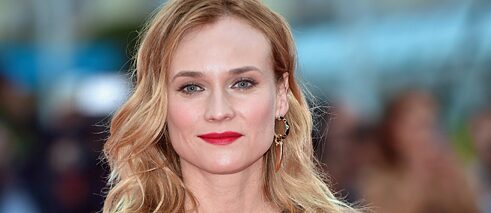
To be sure, most German actresses dream of becoming famous beyond the borders of their home country. Only a few, however, have actually made it – film critic, Birgit Roschy, presents the ten most successful actresses.
Of all the German actresses who have managed to rise to super-stardom and gain mythical status all over the world, the front runner undoubtedly has to be the never-to-be forgotten Marlene Dietrich. She was a cosmopolitan citizen of the world, who decided not to return to her old home. Since Marlene, however, no other female star from Germany has come anywhere near to exuding star allure of this kind. Whereas directors like Roland Emmerich and Wolfgang Petersen managed to make a career in Hollywood, the heart of the entertainment industry, Germany’s promising actresses were denied access due to the language barrier. In these times, however, of global cooperation and international co-productions, there are now more and more character actresses being recognised and idolised, not only on the streets of Berlin, but also in Paris, New York and Los Angeles. These include, for example, Franka Potente, the cool icon of the reunified city of Berlin or Marianne Sägebrecht from Bavaria. Not to mention Hanna Schygulla, who embodies a certain epoch in German film history, just as Marlene Dietrich once did. There are, however, some German actresses who made it onto the world’s silver screens, but went almost unnoticed at home by German audiences. This is an honours list, commending ten of these “outstanding” actresses from Germany.
Marlene Dietrich
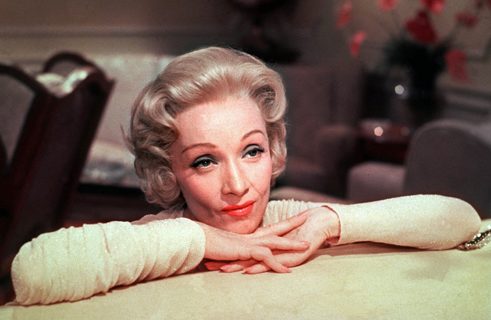 Marlene Dietrich, undatiert
| Photo (detail): © dpa/Bert Reisfeld
In 1929 director, Josef von Sternberg, was on the look-out for a leading actress to play in the German UFA film Der blaue Engel (The Blue Angel). Although at first he thought Marlene Dietrich, born in Berlin in 1901, was a “silly goose”, he engaged the one-time showgirl for the role of Lola Lola, an unscrupulous honky-tonk dancer. The Blue Angel was the birth of a myth – after the worldwide success of the film, the actress followed Sternberg to Hollywood and in glamorous productions she let her mentor stylise her into an erotic goddess. In films such as Morocco (Josef von Sternberg, 1930), Shanghai Express (Josef von Sternberg, 1932) and Destry Rides Again (George Marshall, 1939), she embodied a hitherto unaccustomed female image: half-ruthless femme fatale, half-rebel, armed with an irresistible nonchalance. Even in real life, the style icon and opponent of national socialism, who wore trousers suits and had love affairs with both sexes, had an unconventional image. Post-war Germany, however, was hostile to the former emigrant, who embarked on a second superstar career as a singer, and treated her as if she were a “traitor”. Dietrich, the greatest German international star, in the end turned her back on Germany and retired to Paris, where she lived until her death in 1992. In 1999, she was the only German film star to be selected by the American Film Institute as one of the 25 greatest female screen legends of all time.
Marlene Dietrich, undatiert
| Photo (detail): © dpa/Bert Reisfeld
In 1929 director, Josef von Sternberg, was on the look-out for a leading actress to play in the German UFA film Der blaue Engel (The Blue Angel). Although at first he thought Marlene Dietrich, born in Berlin in 1901, was a “silly goose”, he engaged the one-time showgirl for the role of Lola Lola, an unscrupulous honky-tonk dancer. The Blue Angel was the birth of a myth – after the worldwide success of the film, the actress followed Sternberg to Hollywood and in glamorous productions she let her mentor stylise her into an erotic goddess. In films such as Morocco (Josef von Sternberg, 1930), Shanghai Express (Josef von Sternberg, 1932) and Destry Rides Again (George Marshall, 1939), she embodied a hitherto unaccustomed female image: half-ruthless femme fatale, half-rebel, armed with an irresistible nonchalance. Even in real life, the style icon and opponent of national socialism, who wore trousers suits and had love affairs with both sexes, had an unconventional image. Post-war Germany, however, was hostile to the former emigrant, who embarked on a second superstar career as a singer, and treated her as if she were a “traitor”. Dietrich, the greatest German international star, in the end turned her back on Germany and retired to Paris, where she lived until her death in 1992. In 1999, she was the only German film star to be selected by the American Film Institute as one of the 25 greatest female screen legends of all time.
Hildegard Knef
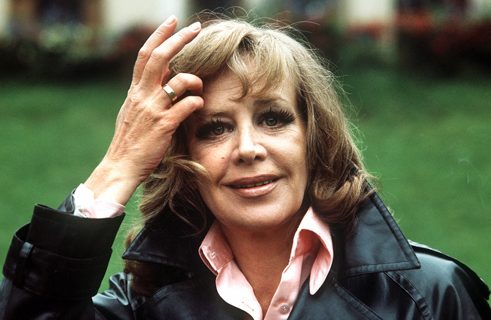 Hildegrad Knef, 1973 in Austria
| Photo (detail): © dpa/Horst Ossinger
Hardly any other female showbiz star from the last few decades was so revered and, at the same time, so hated by audiences as “die Knef”, as she was known in Germany. As early as in 1951, the young girl from Berlin caused the biggest scandal of the prudish post-war period by appearing nude for a few seconds in the melodrama, Die Sünderin (The Sinner). Even before that, just after the end of the Nazi period, the up-and-coming young actress from the UFA studios, who was born in 1925, had already caused quite a stir in the brilliant role she played in the drama, Die Mörder sind unter uns (The Murderers are Among Us, 1946), directed by Wolfgang Staudte, in 1946. That led to her being offered contracts by Hollywood studios. In the USA, the beauty with the brittle sex appeal embarked on a remarkable career that was crowned by the Ninochka role in the Broadway musical, Silk Stockings. Ella Fitzgerald said she was the “best singer in the world without a voice”. Back home in Germany, however, this artistic multi-talent was filling concert halls with people who wanted to hear her sing her own chansons, for example, Für mich soll’s rote Rosen regnen (Let it rain red roses for me). She was the ever-so-human diva, who revealed her private ups and downs in her autobiographical bestseller, Der geschenkte Gaul (The Gift Horse). She had already become a legend even before she died in 2002.
Hildegrad Knef, 1973 in Austria
| Photo (detail): © dpa/Horst Ossinger
Hardly any other female showbiz star from the last few decades was so revered and, at the same time, so hated by audiences as “die Knef”, as she was known in Germany. As early as in 1951, the young girl from Berlin caused the biggest scandal of the prudish post-war period by appearing nude for a few seconds in the melodrama, Die Sünderin (The Sinner). Even before that, just after the end of the Nazi period, the up-and-coming young actress from the UFA studios, who was born in 1925, had already caused quite a stir in the brilliant role she played in the drama, Die Mörder sind unter uns (The Murderers are Among Us, 1946), directed by Wolfgang Staudte, in 1946. That led to her being offered contracts by Hollywood studios. In the USA, the beauty with the brittle sex appeal embarked on a remarkable career that was crowned by the Ninochka role in the Broadway musical, Silk Stockings. Ella Fitzgerald said she was the “best singer in the world without a voice”. Back home in Germany, however, this artistic multi-talent was filling concert halls with people who wanted to hear her sing her own chansons, for example, Für mich soll’s rote Rosen regnen (Let it rain red roses for me). She was the ever-so-human diva, who revealed her private ups and downs in her autobiographical bestseller, Der geschenkte Gaul (The Gift Horse). She had already become a legend even before she died in 2002.
Hanna Schygulla
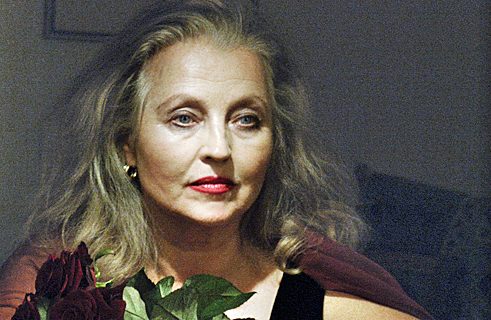 Hanna Schygulla
| Photo (detail): © Dorothea Wimmer
No other actress represents the most rebellious phase of German cinema like this wayward artist. Born in Silesia in 1943, she grew up in Munich, where later she became the muse of the legendary director, Rainer Werner Fassbinder, who, with his radicalism, swept away what was known as the “grandpa’s cinema” of the post-war period. In twelve years she appeared in 23 of his films, including Lili Marleen (1980) and Die Ehe der Maria Braun (The Marriage of Maria Braun, 1978), the films that led to her breakthrough on the international scene. After Fassbinder’s early death, the introverted artist moved to Paris and became the actress of choice for European filmmakers such as Andrzej Wajda, Carlos Saura, Jean-Luc Godard and Ettore Scola. Her seemingly lascivious aura also lent wings to her second, equally successful career as a chanson singer. Wach auf und träume (Wake Up and Dream), is the title of her autobiography that speaks for itself. In it, the grand dame of European art house cinema describes herself as an anti-star and a wanderer between the worlds.
Hanna Schygulla
| Photo (detail): © Dorothea Wimmer
No other actress represents the most rebellious phase of German cinema like this wayward artist. Born in Silesia in 1943, she grew up in Munich, where later she became the muse of the legendary director, Rainer Werner Fassbinder, who, with his radicalism, swept away what was known as the “grandpa’s cinema” of the post-war period. In twelve years she appeared in 23 of his films, including Lili Marleen (1980) and Die Ehe der Maria Braun (The Marriage of Maria Braun, 1978), the films that led to her breakthrough on the international scene. After Fassbinder’s early death, the introverted artist moved to Paris and became the actress of choice for European filmmakers such as Andrzej Wajda, Carlos Saura, Jean-Luc Godard and Ettore Scola. Her seemingly lascivious aura also lent wings to her second, equally successful career as a chanson singer. Wach auf und träume (Wake Up and Dream), is the title of her autobiography that speaks for itself. In it, the grand dame of European art house cinema describes herself as an anti-star and a wanderer between the worlds.
Marianne Sägebrecht
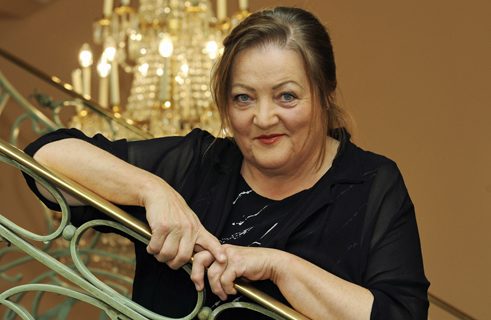 Marianne Sägebrecht, 2010
| Photo (detail): © dpa/Tobias Hase
Back in 1987, a Bavarian housewife in a smart loden suit ended up stranded in the Arizona desert and ended up also inspiring American art-house audiences. The comedy Out of Rosenheim (Baghdad Café, Percy Adlon 1987) presented Marianne Sägebrecht, as the New York Times noted, as “indescribably charismatic”. She was born as the daughter of a gardener in Starnberg in 1945, but since Baghdad Café she has also been recognized on the streets of Los Angeles and Paris. Her performances in the US comedies Moon Over Parador (Paul Mazursky, 1988) and The War of the Roses (Danny deVito, 1989) or with Michel Piccoli in the romantic drama Martha and I (Martha et Moi, Jirí Weiss, 1990), confirmed her status as an exceptional artist. “A movie must be well seasoned. And I am the garlic”, says Sägebrecht. She was trained as a doctor’s receptionist and used to run a legendary artist’s bar in Munich. Occasionally she worked on the side in cabaret and theatre, until she was discovered by director Percy Adlon and scored a hit with his quirky romantic comedy Zuckerbaby (Sugar Baby, 1985). Since then, it has been almost impossible to imagine the film scene without Sägebrecht: “i am one of the last elephant mothers left roaming the grasslands of the celluloid world”.
Marianne Sägebrecht, 2010
| Photo (detail): © dpa/Tobias Hase
Back in 1987, a Bavarian housewife in a smart loden suit ended up stranded in the Arizona desert and ended up also inspiring American art-house audiences. The comedy Out of Rosenheim (Baghdad Café, Percy Adlon 1987) presented Marianne Sägebrecht, as the New York Times noted, as “indescribably charismatic”. She was born as the daughter of a gardener in Starnberg in 1945, but since Baghdad Café she has also been recognized on the streets of Los Angeles and Paris. Her performances in the US comedies Moon Over Parador (Paul Mazursky, 1988) and The War of the Roses (Danny deVito, 1989) or with Michel Piccoli in the romantic drama Martha and I (Martha et Moi, Jirí Weiss, 1990), confirmed her status as an exceptional artist. “A movie must be well seasoned. And I am the garlic”, says Sägebrecht. She was trained as a doctor’s receptionist and used to run a legendary artist’s bar in Munich. Occasionally she worked on the side in cabaret and theatre, until she was discovered by director Percy Adlon and scored a hit with his quirky romantic comedy Zuckerbaby (Sugar Baby, 1985). Since then, it has been almost impossible to imagine the film scene without Sägebrecht: “i am one of the last elephant mothers left roaming the grasslands of the celluloid world”.
Barbara Sukowa
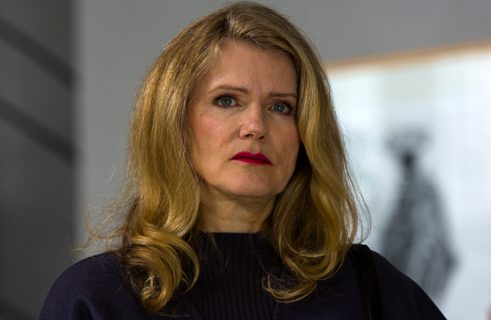 Barbara Sukowa
| Photo (detail): © Concorde Filmverleih
Like many of the stars born in the post-war era, the merchant’s daughter, Barbara Sukowa, born in Bremen in 1950, celebrated her breakthrough with director Rainer Werner Fassbinder. As “Mieze”, a character in his acclaimed series Berlin Alexanderplatz and as Lola in the drama Lola (1980), she became the perfect choice to play great, tragic female leads. As the muse of Margarethe von Trotta, she portrayed the RAF terrorist Gudrun Ensslin in Die bleierne Zeit (The German Sisters, 1981), the German-Polish socialist in the eponymous Rosa Luxemburg (1986), the philosophical theorist Hannah Arendt (2012), and in Vision – From the Life of Hildegard von Bingen (2009), even a saint. But the mother of three and wife of the multi-medialist Robert Longo managed to launch a second career in New York. She sings in both classical concerts as well as in her own rock band and occasionally makes the odd guest appearance in cool films like John Turturro’s Romance & Cigarettes (2005). Her work in the USA has enabled her to finally learn “how to smile”, says Sukowa.
Barbara Sukowa
| Photo (detail): © Concorde Filmverleih
Like many of the stars born in the post-war era, the merchant’s daughter, Barbara Sukowa, born in Bremen in 1950, celebrated her breakthrough with director Rainer Werner Fassbinder. As “Mieze”, a character in his acclaimed series Berlin Alexanderplatz and as Lola in the drama Lola (1980), she became the perfect choice to play great, tragic female leads. As the muse of Margarethe von Trotta, she portrayed the RAF terrorist Gudrun Ensslin in Die bleierne Zeit (The German Sisters, 1981), the German-Polish socialist in the eponymous Rosa Luxemburg (1986), the philosophical theorist Hannah Arendt (2012), and in Vision – From the Life of Hildegard von Bingen (2009), even a saint. But the mother of three and wife of the multi-medialist Robert Longo managed to launch a second career in New York. She sings in both classical concerts as well as in her own rock band and occasionally makes the odd guest appearance in cool films like John Turturro’s Romance & Cigarettes (2005). Her work in the USA has enabled her to finally learn “how to smile”, says Sukowa.
Nastassja Kinski
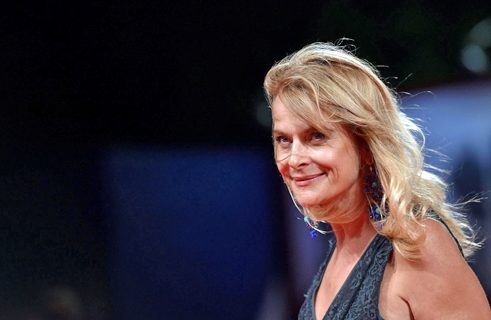 Nastassja Kinski, 2015 at the Venice Film festival
| Photo (detail): © dpa/Ettore Ferrari
In 1977 a sixteen-year-old, lovesick schoolgirl with pouting lips and green eyes appeared in an episode of the popular Tatort detective series called Reifezeugnis (Graduation Exam) – and the whole of Germany fell for her. Nastassja Kinski developed into an internationally sought after actress and went on to make films with, Francis Ford Coppola, Roman Polanski and Paul Schrader, to name but a few. “Nasti”, as she was nicknamed, celebrated her greatest success in Wim Wenders’ film Paris Texas in 1985. He discovered her in a disco in Munich when she was twelve and gave her a small role – her first taste of show business. It was her sensitivity and sensuality that lent romantic flair to Wender's German-American road movie – and that created gooseflesh all round. This image of the seductive Lolita, who was born in West Berlin in 1961, often, however, stood in the way of the daughter of actor, Klaus Kinski. She lives in Hollywood and as an actress and a mother of three seems to manage her life well there, but particularly in her old home country she still embodies the image of the dazzling nymphet, somewhere between “femme fatale” and “femme fragile”.
Nastassja Kinski, 2015 at the Venice Film festival
| Photo (detail): © dpa/Ettore Ferrari
In 1977 a sixteen-year-old, lovesick schoolgirl with pouting lips and green eyes appeared in an episode of the popular Tatort detective series called Reifezeugnis (Graduation Exam) – and the whole of Germany fell for her. Nastassja Kinski developed into an internationally sought after actress and went on to make films with, Francis Ford Coppola, Roman Polanski and Paul Schrader, to name but a few. “Nasti”, as she was nicknamed, celebrated her greatest success in Wim Wenders’ film Paris Texas in 1985. He discovered her in a disco in Munich when she was twelve and gave her a small role – her first taste of show business. It was her sensitivity and sensuality that lent romantic flair to Wender's German-American road movie – and that created gooseflesh all round. This image of the seductive Lolita, who was born in West Berlin in 1961, often, however, stood in the way of the daughter of actor, Klaus Kinski. She lives in Hollywood and as an actress and a mother of three seems to manage her life well there, but particularly in her old home country she still embodies the image of the dazzling nymphet, somewhere between “femme fatale” and “femme fragile”.
Franka Potente
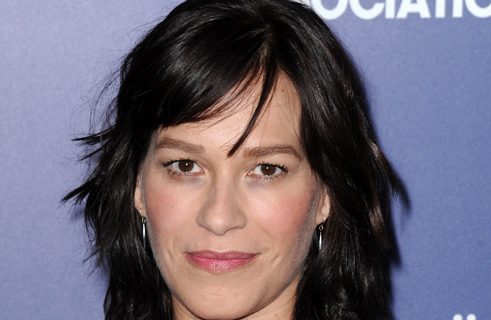 Franka Potente, Los Angeles 2014
| Photo (detail): © dpa/D. Long
In the film Lola Rennt (Run Lola Run, Tom Tykwer) from 1998 Franka Potente caused quite a sensation as a tattooed punk-minx with flame-red hair. This aesthetically experimental film set in Berlin, which shows three versions of the heroine running through the city to raise a hundred thousand deutschmarks to save her boyfriend’s life, turned Potente into the flagship of a new, cool German cinema. In the USA the cult film became the second biggest German box office hit after Das Boot (The Boot, Wolfgang Petersen, 1980) and enabled Potente to take on roles alongside stars like Johnny Depp in Blow and Matt Damon in the Bourne action series. It was not work, however, that prompted Ms. Potente to move to Los Angeles, but love. The actress divides her time between her family in L.A. and her many appearances in US and German cinema films and series. In addition, the artist, who was born in Münster in 1974, has also gained recognition as a writer and a director of short films.
Franka Potente, Los Angeles 2014
| Photo (detail): © dpa/D. Long
In the film Lola Rennt (Run Lola Run, Tom Tykwer) from 1998 Franka Potente caused quite a sensation as a tattooed punk-minx with flame-red hair. This aesthetically experimental film set in Berlin, which shows three versions of the heroine running through the city to raise a hundred thousand deutschmarks to save her boyfriend’s life, turned Potente into the flagship of a new, cool German cinema. In the USA the cult film became the second biggest German box office hit after Das Boot (The Boot, Wolfgang Petersen, 1980) and enabled Potente to take on roles alongside stars like Johnny Depp in Blow and Matt Damon in the Bourne action series. It was not work, however, that prompted Ms. Potente to move to Los Angeles, but love. The actress divides her time between her family in L.A. and her many appearances in US and German cinema films and series. In addition, the artist, who was born in Münster in 1974, has also gained recognition as a writer and a director of short films.
Christiane Paul
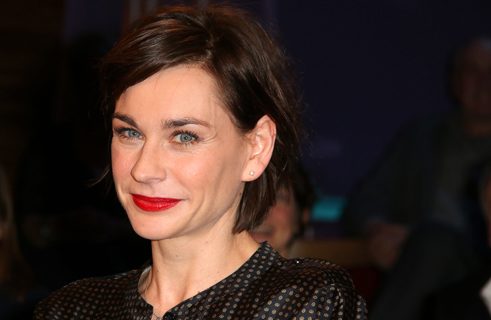 Christiane Paul, 2016
| Photo (detail): © dpa/Stephan Persch
Born in East Germany in 1974, this actress first opted for a career to become a doctor, but while she was studying medicine, she started taking her first tentative steps in front of the camera. It was not, however, until after her PhD thesis in 2004 that she decided entirely on a career in acting. By this time the cheerful-looking woman with the “Julia Roberts” mouth had long since become one of the most popular and well-known faces of German film and television. The actress managed to break through in 1997 with a comedy about Berlin called Das Leben ist eine Baustelle (Life is All you Get, Wolfgang Becker), in which she plays a street musician. Christiane Paul, who has worked with some of the most renowned contemporary directors such as Theo Angelopoulos in The Dust of Time (2008), Fatih Akin in Im Juli (In July, 2000), and Dennis Gansel in Die Welle (The Wave, 2008), is known for radiating a appeal as the “young woman from next door”. Up until now, Christiane Paul has only rarely been seen in international films, but in 2016 she was the first German actress to be awarded an Emmy, the US television Oscar, for her role in the terrorist thriller Unterm Radar (Under The Radar, Elmar Fischer, 2015).
Christiane Paul, 2016
| Photo (detail): © dpa/Stephan Persch
Born in East Germany in 1974, this actress first opted for a career to become a doctor, but while she was studying medicine, she started taking her first tentative steps in front of the camera. It was not, however, until after her PhD thesis in 2004 that she decided entirely on a career in acting. By this time the cheerful-looking woman with the “Julia Roberts” mouth had long since become one of the most popular and well-known faces of German film and television. The actress managed to break through in 1997 with a comedy about Berlin called Das Leben ist eine Baustelle (Life is All you Get, Wolfgang Becker), in which she plays a street musician. Christiane Paul, who has worked with some of the most renowned contemporary directors such as Theo Angelopoulos in The Dust of Time (2008), Fatih Akin in Im Juli (In July, 2000), and Dennis Gansel in Die Welle (The Wave, 2008), is known for radiating a appeal as the “young woman from next door”. Up until now, Christiane Paul has only rarely been seen in international films, but in 2016 she was the first German actress to be awarded an Emmy, the US television Oscar, for her role in the terrorist thriller Unterm Radar (Under The Radar, Elmar Fischer, 2015).
Diane Kruger
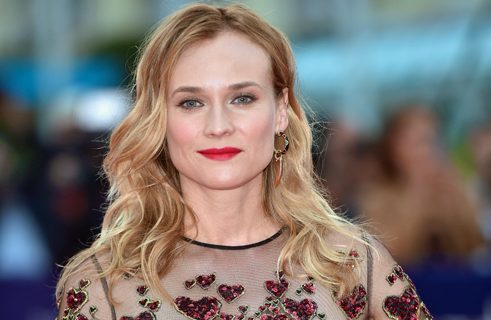 Diane Kruger, 42.Deauville US Film Festival 2016
| Photo (detail): © dpa/Franck Castel / Wostok Press
Few would have predicted that this young woman, who switched from the cat walk to the screen like so many star models before her, would make a respectable career for herself in the movie business. One well known film critic even slated Diane Kruger as “too beautiful to ever play a role with depth”. With the same light-footedness, however, with which the trained ballet dancer used to move along the catwalks, she has been moving between US, French and German film locations for many years – and between blockbusters and character roles. Born in the state of Lower Saxony in 1976 under the name Heidkrüger, she went to Paris at the age of 16 to start a modelling career. When she celebrated her international breakthrough in 2004 as the beautiful Helen in the historical epic Troy (Wolfgang Petersen, 2004), she was already a recognised actress in France. She went on to make other Hollywood blockbusters such as National Treasure (Jon Turteltaub, 2004) and Inglourious Basterds (Quentin Tarantino, 2009), making her the most popular German actress on an international level. That, however, did not stop the heart of this trilingual, citizen of the world continuing to beat for European art house cinema.
Diane Kruger, 42.Deauville US Film Festival 2016
| Photo (detail): © dpa/Franck Castel / Wostok Press
Few would have predicted that this young woman, who switched from the cat walk to the screen like so many star models before her, would make a respectable career for herself in the movie business. One well known film critic even slated Diane Kruger as “too beautiful to ever play a role with depth”. With the same light-footedness, however, with which the trained ballet dancer used to move along the catwalks, she has been moving between US, French and German film locations for many years – and between blockbusters and character roles. Born in the state of Lower Saxony in 1976 under the name Heidkrüger, she went to Paris at the age of 16 to start a modelling career. When she celebrated her international breakthrough in 2004 as the beautiful Helen in the historical epic Troy (Wolfgang Petersen, 2004), she was already a recognised actress in France. She went on to make other Hollywood blockbusters such as National Treasure (Jon Turteltaub, 2004) and Inglourious Basterds (Quentin Tarantino, 2009), making her the most popular German actress on an international level. That, however, did not stop the heart of this trilingual, citizen of the world continuing to beat for European art house cinema.
Alexandra Maria Lara
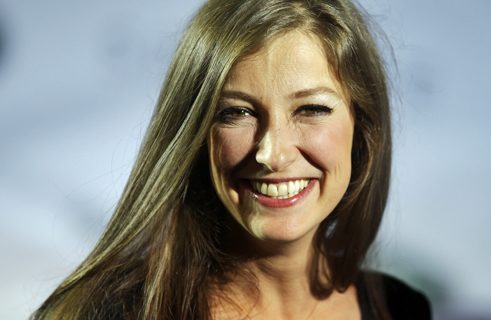 Alexandra Maria Lara, 2015
| Photo (detail): © dpa/Federik von Erichsen
This actress is, in fact, an emigrant. She was born in Romania in Bucharest in 1978. She and her family fled the Ceauşescu regime and came to Germany in 1983. Be it dramas by filmmaker Doris Dörrie such as Der Fischer und seine Frau (The Fisherman and his Wife, 2005), comedies or children’s films – from an early age, the actress, who learned her craft in Romania from her father, a one-time theatre star, established herself quickly and effortlessly in the major league of German cinema. Her international breakthrough came with the role of Hitler’s secretary, Traudl Junge, in Der Untergang (Downfall, Oliver Hirschbiegel) in 2004. The discreetly living star, who also became a member of the Cannes Film Festival jury, developed into an internationally successful actress without gaining very much attention from German audiences. Francis Ford Coppola, who cast her in his metaphysical drama Jugend ohne Jugend (Youth without Youth, 2007), was up to now the best known of all the directors and world stars – like Spike Lee, Stephen Daldry, James Ivory and Gérard Depardieu – with whom the versatile artist has worked.
Alexandra Maria Lara, 2015
| Photo (detail): © dpa/Federik von Erichsen
This actress is, in fact, an emigrant. She was born in Romania in Bucharest in 1978. She and her family fled the Ceauşescu regime and came to Germany in 1983. Be it dramas by filmmaker Doris Dörrie such as Der Fischer und seine Frau (The Fisherman and his Wife, 2005), comedies or children’s films – from an early age, the actress, who learned her craft in Romania from her father, a one-time theatre star, established herself quickly and effortlessly in the major league of German cinema. Her international breakthrough came with the role of Hitler’s secretary, Traudl Junge, in Der Untergang (Downfall, Oliver Hirschbiegel) in 2004. The discreetly living star, who also became a member of the Cannes Film Festival jury, developed into an internationally successful actress without gaining very much attention from German audiences. Francis Ford Coppola, who cast her in his metaphysical drama Jugend ohne Jugend (Youth without Youth, 2007), was up to now the best known of all the directors and world stars – like Spike Lee, Stephen Daldry, James Ivory and Gérard Depardieu – with whom the versatile artist has worked.Many young Germans find the idea of becoming a film actor very appealing. Movie stars, it would appear, live glamorous lives. Yet success in this business depends not only on talent and personality.
